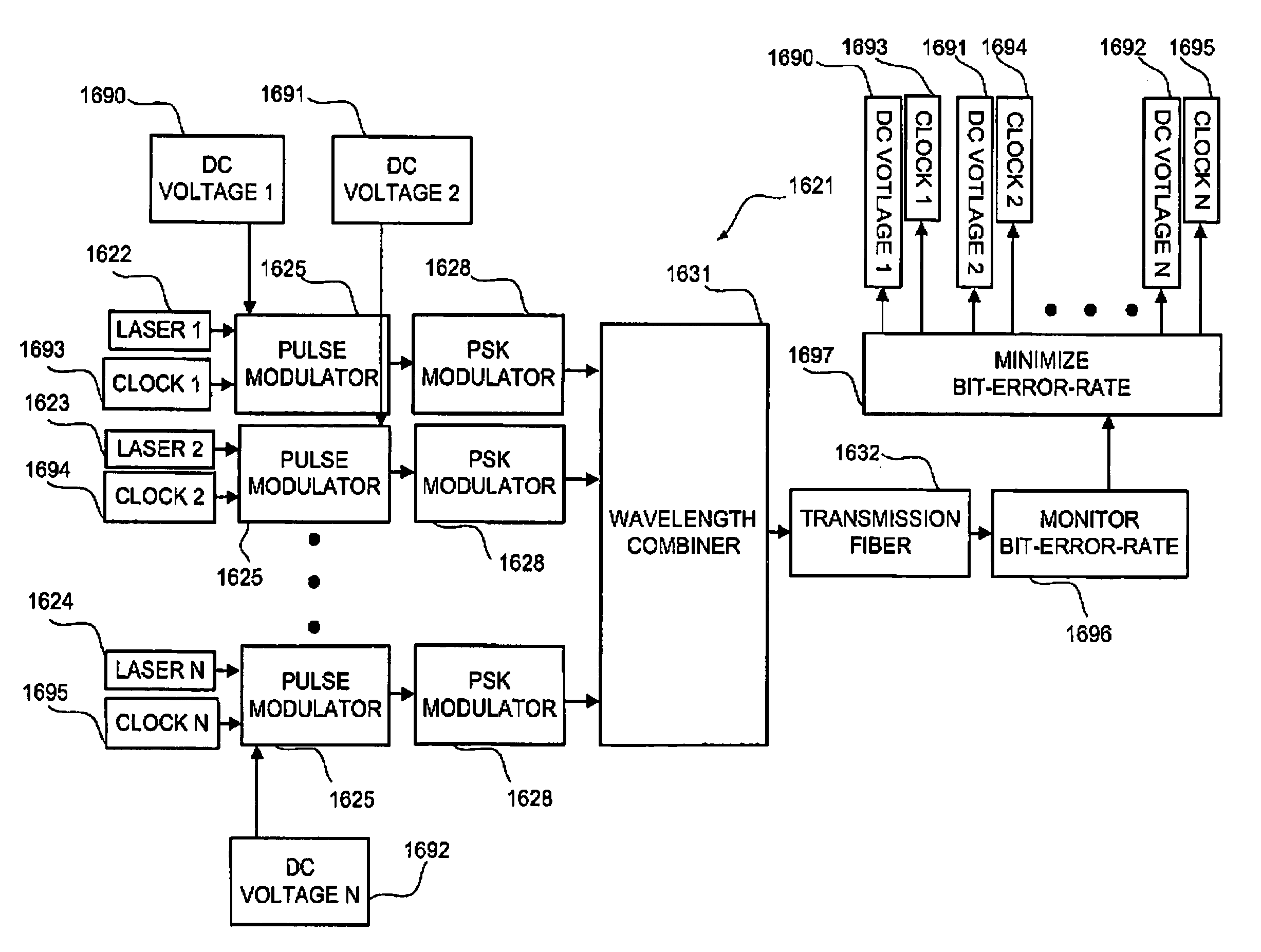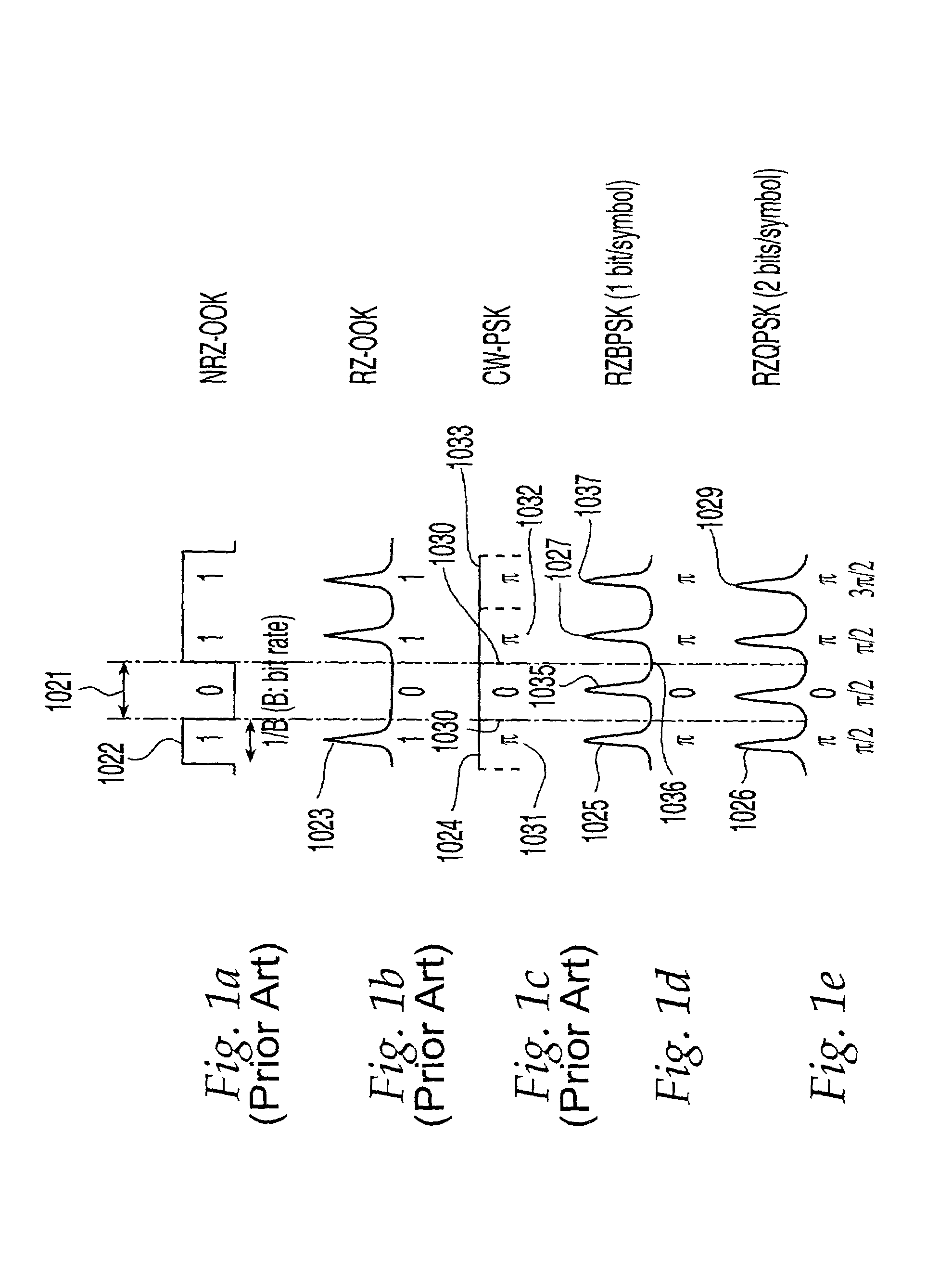Method and system for mitigating nonlinear transmission impairments in fiber-optic communications systems
a fiber-optic communication system and nonlinear transmission technology, applied in the field of method and system for transmitting and receiving optically encoded information, can solve the problems of limiting the practical transmission capacity-distance product, increasing the penalties for linear as well as nonlinear crosstalk between channels, and all the above-mentioned rz-ook techniques, but do not address effectively the critical problem of cross phase modulation impairmen
- Summary
- Abstract
- Description
- Claims
- Application Information
AI Technical Summary
Benefits of technology
Problems solved by technology
Method used
Image
Examples
Embodiment Construction
[0065]The present invention addresses problems of fiber nonlinear impairments, such as those associated with the transmission of OOK and CW-PSK signals through optical fibers. The current invention provides a modulation format that effectively suppresses fiber nonlinearities by preparing a preferably continuous regular train of optical pulses that are phase modulated to encode information from a data source.
[0066]Referring to FIGS. 1a–1f, a binary phase-shift keying (PSK) optical pulse stream 1025 of the invention comprises return-to-zero optical pulses. A phase, such as 0 or π, of optical pulses 1027 represents information encoded from a data source. Pulse stream 1025 contains essentially no missing pulses and is transmitted into an optical fiber as a continuous pulse train. A quaternary PSK optical pulse stream 1026 also comprises return-to-zero optical pulses. Each pulse of pulse stream 1026 encodes 1 bit of information from a respective one of two data sources. For example, a pu...
PUM
 Login to View More
Login to View More Abstract
Description
Claims
Application Information
 Login to View More
Login to View More - R&D
- Intellectual Property
- Life Sciences
- Materials
- Tech Scout
- Unparalleled Data Quality
- Higher Quality Content
- 60% Fewer Hallucinations
Browse by: Latest US Patents, China's latest patents, Technical Efficacy Thesaurus, Application Domain, Technology Topic, Popular Technical Reports.
© 2025 PatSnap. All rights reserved.Legal|Privacy policy|Modern Slavery Act Transparency Statement|Sitemap|About US| Contact US: help@patsnap.com



